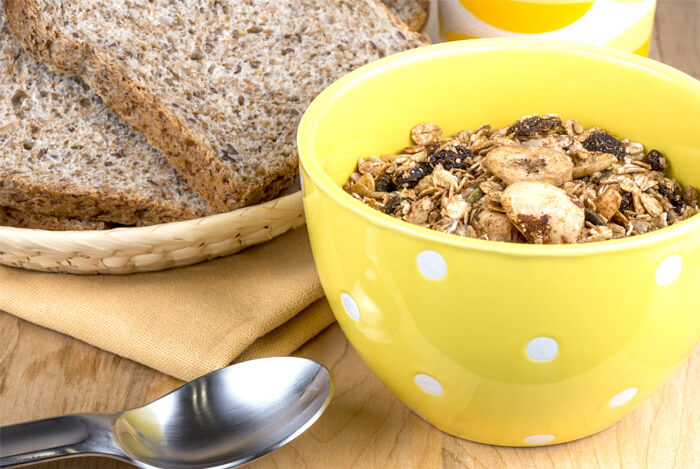From the beginning, let’s be clear: the low residue diet is not some trendy, fad diet promising to help you lose weight. This diet is intense, and is used for a very specific purpose.
The low residue diet is carefully tailored for people who have inflammatory bowel diseases like Crohn’s, ulcerative colitis, diverticulitis, and people who have recently undergone abdominal or intestinal surgery. Most people will never even be in the position to consider a diet such as this.
So, if you’re just looking for a diet that’s going to fit your lifestyle while helping you slim down, you should probably look elsewhere.
But, that’s not all there is to be said about the low residue diet. The ways it claims to help the body are worthy of some investigation, and there’s no shortage of intrigue around whether or not it actually works. So, let’s get to the bottom – no awful pun intended – of whether or not the low residue diet can help in the fight against inflammatory bowel disease.
- What is the Low Residue Diet?
- What Foods Are Allowed?
- What Foods Are Off Limits?
- What Is Fiber?
- Has It Been Proven Effective?
- Should You Try It?
Table of Contents
+What is the Low Residue Diet?

The low residue diet is built around taking it easy on your digestive tract by completely restricting foods that are difficult to digest. People who suffer from inflammatory bowel disease (IBD) and Crohn’s disease are sometimes placed on the diet, or a similar low fiber diet, to slow down the digestion process and alleviate their symptoms.
In Crohn’s disease, the immune system attacks the gastrointestinal tract, targeting the bacteria of the gut. There is no known cure for Crohn’s disease, only a recommended course of lifestyle changes that can hopefully cut down the suffering. The low residue diet has been, at times, one of these recommendations.
Instead of eating the recommended well balanced diet of proteins, grains, fruits and vegetables, the foods you’ll be eating will be optimized for relieving symptoms of gut problems.
The low residue diet seeks to maximize the amount of time food spends traveling through the body so as to increase the amount of nutrients absorbed while reducing the frequency of stools. It also seeks to limit gas, diarrhea, and bloating as much as possible.
A normal diet in people without bowel disorders typically consists of 25 to 38 grams of fiber a day. A typical low fiber diet might lower that amount down to 10 to 15 grams a day. The low residue diet adds even further restrictions by limiting dieters to consuming at most 7-10 grams of fiber a day.
The reason these fibrous foods are so restricted is because of the effect they can have on the body. They will often leave a ‘residue’ of undigested food (mostly fiber) that cannot be completely broken down in the digestive process, adding to the bulk of the waste and leading to inflammation of the intestine. Thus, more difficult number twos.
What Foods Are Allowed?

Sometimes, fiber is present without you even realizing it. This is why, if you’re placed on a low fiber or low residue diet, it’s important to always look at the nutrition labels on the foods you buy. Try to find foods that have as low as a single gram of fiber per serving.
Foods that fit this criteria include:
- Tender, lean meat (ground sirloin)
- Eggs
- Tofu
- Avocado
- Fish
- Poultry
- Pancakes or waffles made with white, refined flour
- Refined carbs (white bread, rolls, biscuits, rye without seeds, cereals like Corn Flakes, Rice Crispies, Special K, sweet potato without skin)
- Plain white pasta
- Crackers (saltines, vanilla wafers)
- Butter, margarine, and salad dressings without seeds
- Milk and milk products (limited to 1-2 servings a day; it’s mostly up to you), unless, of course, you’re lactose intolerant
- Low-fat dairy substitutes like almond or soy milk
You might already have a shaky relationship with some of these foods. If, for instance, your stomach and fish do not have a history of getting along, go ahead and strike that off the list.
Make sure everything you eat is well cooked. Steaming, microwaving, poaching, braising, and simmering are all good methods for preparing an easy to digest dinner.
Remember that this list is all about what people generally have the least trouble digesting. If you think they might give you problems, eat what you think is best. The low residue diet, at its core, is about helping you deal with your IBD.
What Foods Are Off Limits?

You have your own body, with your own digestive tract, that has its own likes and dislikes – so to speak, which makes you the real expert on what foods you can and cannot handle. Though some foods are known to be more likely to irritate your system than others.
The No-Nos:
- Whole wheat and whole grain carbohydrates (pumpernickel, dark rye, muffins, cereal, granola, oatmeal, pasta, buckwheat)
- Dried fruits and fruit juices (pineapple, coconut, figs, berries, prunes)
- Raw fruits and vegetables (broccoli, cauliflower, corn, cabbage, Brussels sprouts, peas, squash)
- Strong cheeses and yogurts containing fruit
- Dried lentils and legumes
- Peanut butter and other nut butters
- Seeds and nuts
- Sauerkraut
- Vegetable sauces with seeds
- Caffeine
- Chocolate
- Spicy foods
- Tough meat
- Deli meat
There will be some trial and error involved, so whenever trying a new food while on the diet, limit it to small portions to test how your body reacts to it.
What Is Fiber?

With all this talk of fiber, maybe I should touch on what it really is.
There are two categories of dietary fiber: soluble and insoluble. Neither can be absorbed as nutrients by the gastrointestinal enzymes.
Soluble fiber can be broken down during digestion through fermentation, where it absorbs water, becomes gelatinous, and adds bulk to the fecal matter. It has been linked to lower cholesterol, and is believed to assist in the absorption of vitamins and minerals.
Insoluble fiber cannot be broken down and does not change form as it passes through the intestinal tract. It’s often recommended for weight loss purposes because it provides bulk and makes you feel fuller, without you having to eat more food.
This is often the reason for high fiber diets. However, high fiber diets are thought to cause bloating and discomfort, which can aggravate intestinal tissue. This is the initial reasoning behind the small popularity among doctors of the low residue diet.
Well then. Does it work?
Has It Been Proven Effective?

To date, there is no evidence that the low residue diet works to prevent inflammation or irritation of the bowel in Crohn’s, diverticulitis, ulcerative colitis, or otherwise. Most evidence is to the contrary, suggesting a diet including more fiber may actually benefit the gastrointestinal tract.
Usually, patients are only put on the diet if there is an actual occurrence of a blockage in the intestine, so as not to further agitate the gut and to prevent further blockage.
But the idea that the gut might be agitated by this ‘residue’ has no scientific basis. There has never been an observational study suggesting a link, nor have there been any studies done demonstrating an actual effect.
A study performed in Italy comparing a low residue diet to a normal Italian diet took seventy patients suffering from Crohn’s disease and randomly assigned them to either diet. By the end of 29 months, there was found to be “no difference in outcome between the two groups, including symptoms, need for hospitalization, need for surgery, new complications, nutritional status, or postoperative recurrence”.
Limiting foods that could potentially leave these residues behind in the gut, which allegedly scrape their way to the exit, may seem like common sense; however, the diet recommendations are a little strange.
People on a long term low residue diet also have a risk of developing hemorrhoids and chronic constipation.
You probably are used to hearing that diets high in fiber are best for gut health. This is because of the multitude of studies supporting the efficacy of these diets in maintaining healthy gut bacteria, on which lots of scholarly work is currently being done. One guy even won the Nobel prize for his research into the effects these bacteria have on the body, something science had no idea about just ten years ago.
It would seem the low residue diet is really only a last-ditch effort in alleviating specific symptoms before reverting back to a healthy, balanced diet.
Should You Try It?

The low residue diet is a pretty niche diet, to be sure. A doctor may put you on it if you’re struggling with some of the various disorders I’ve mentioned, but it’s not the type of diet a healthy person should opt for. If your doctor does put you on the diet, it shouldn’t be for very long.
This is mostly because of the absence of certain nutrients in the diet plan, which can be found in a regular balanced diet. These include important antioxidants, phytonutrients, vitamins, minerals, etc. that are found in the fruits, vegetables, grains, and nuts that are being removed in the low residue diet.
Your Recommended Dietary Allowances (RDAs), established by federally employed nutritionists, provide a reference for how much you should consume of every nutrient over the course of each day. A low residue or low fiber diet should, if properly structured, provide you with all you need to meet your RDA.
But, if you remain on either for an extended period, you may not receive the amounts of vitamin C and folic acid your body needs. Because of this, you might be wise to consult your doctor about nutrition supplements.
If your doctor thinks you’re right for the low residue diet, you should only stay on it for as long as they think it’s best. If you stay on it for a prolonged amount of time, check with your doctors and perhaps even a registered dietician to ensure the daily nutrients you’re receiving are adequate for your body.
Once you return to a normal diet, slowly return to your old eating habits, including the foods you were restricted from eating while on the diet: fruits, vegetables, and whole grains.










